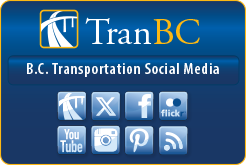Frequently Asked Questions About the Keep Right, Let Others Pass Law
Why was this new law put into place?
The provincewide Rural Highway Safety and Speed Review identified drivers “hogging” the left lane as a safety concern for the residents of B.C. Despite direction in the Motor Vehicle Act that slow drivers should use the right lane, drivers continued to regularly use the left lane as a travelling lane. The Keep Right, Let Others Pass law allows enforcement officers to impose a fine and penalty points.
The safety of the travelling public is our primary goal. Slower-moving vehicles travelling in the left lane not only reduce the efficiency of the highway system but also cause frustration to many motorists trying to move more quickly. This results in aggressive and erratic driving behavior which is unsafe for everyone.
How does this new rule apply to a driver when there is little or no traffic on the highway?
When there is little traffic, and no one is approaching from behind, a driver can travel in the left-most lane. This allows drivers on four-lane highways in rural areas to keep a greater distance from the side of the road where there may be wildlife.
When the highway is congested (e.g. rush hour traffic), does a driver have to force his/her vehicle into the right lane?
No. When the speed of traffic is 50 km/h or slower, a driver may remain in the left hand lane. However, when traffic speed rises above 50 km/h, the driver should move into the right hand lane.
When a highway has a left HOV (High Occupancy Vehicle) lane, which lane is considered the left most one?
The left-most lane does not include bus lanes or HOV lanes. If a highway has an HOV travel lane, the left-most lane is the one next to the HOV lane.
If the right lane contains debris, can the driver use the left lane?
Yes. If the left lane is clear and the right lane is not, the driver may remain in the left lane where it is safer to remain in the left lane.
If a driver is driving in the left lane at the posted speed limit and another vehicle approaches from behind, does the driver need to move out of the left lane?
Yes. The rule requires the driver to move out of the left lane even if the driver is driving at the posted speed limit.

Contact information
For more information contact:
Ministry of Transportation and Infrastructure
250-387-3198
250-356-7706

